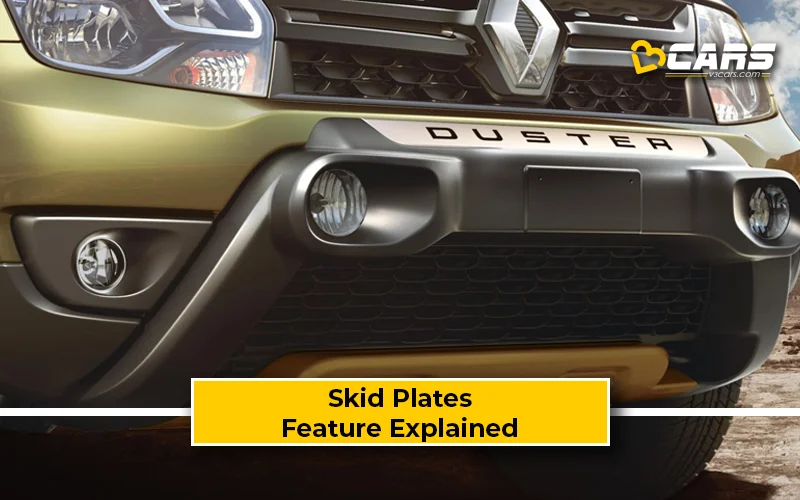Skid Plates – Feature Explained
Skid plates are a crucial component in protecting a vehicle’s undercarriage, especially when driving off-road or in challenging conditions. Let’s delve into the details of what they are, how they work, and their importance.

What Are Skid Plates?
Skid plates are durable, protective plates attached to the underside of a vehicle. They are typically made from robust materials like steel or aluminium and act as a barrier between the vehicle’s vital components and the terrain below. These plates are designed to prevent damage to parts such as the engine, transmission, transfer case, fuel tank, and differentials.
How Do Skid Plates Work?
Skid plates function by absorbing and distributing the impact from contact with obstacles like rocks, logs, and uneven surfaces. Instead of these impacts directly damaging vulnerable components, the skid plate takes the hit, allowing the vehicle to “skid’ or slide over the obstacle with minimal damage. Their smooth surface helps the vehicle slide over obstacles, preventing it from getting stuck or severely damaged.
What Are The Differences Between A Faux Skid Plate And A Fully Functional Skid Or Bash Plate?
It's important to distinguish between real and faux skid plates:
- Faux Skid Plates: These are often plastic pieces integrated into the vehicle’s bumper or underbody panels, primarily for aesthetic purposes. They offer little to no actual protection against impacts. Many SUVs or crossovers have these for cosmetic reasons.
- Fully Functional Skid or Bash Plates: These are heavy-duty, metal plates designed for serious off-road use. They are built to withstand significant force and protect critical components. Bash plates are a type of skid plate, usually thicker and designed to protect the engine and transmission from hard, direct impacts.
What Are The Pros And Cons Of Skid Plates?
Here are the pros, or advantages, of a skid plate:
- Protection: The most significant advantage is the protection they offer to vulnerable undercarriage components, preventing costly damage and potential stranding in remote locations.
- Durability: Made from sturdy materials, they can withstand harsh conditions and impacts.
- Confidence: Skid plates provide peace of mind and allow drivers to navigate challenging terrain with greater confidence.
Here are the cons, or disadvantages, of a skid plate:
- Weight: Skid plates, especially those made of steel, can add significant weight to the vehicle, potentially affecting fuel efficiency and performance.
- Cost: Quality skid plates can be a significant investment, especially for a full set.
- Installation: Installation can sometimes be complex, requiring specialised tools or professional assistance.
- Ground Clearance: In some cases, poorly designed or installed skid plates can reduce the vehicle’s ground clearance and approach angle, slightly hindering off-road capability.
Can Skid Plates Be Fixed From The Aftermarket?
Yes, skid plates can be added or upgraded in the aftermarket. A wide variety of options are available, ranging from universal fit plates to custom-designed solutions tailored to specific vehicle models. Aftermarket skid plates offer enthusiasts the flexibility to choose the level of protection that suits their needs and budget.
Also Read: Top 12 Electric Cars Under Rs. 25 Lakh In India With Over 250km Range
Helpful Tools:
- Fuel Cost Calculator for Cars – Know your monthly fuel expense based on usage and mileage
- Car On-Road Price Calculator – Convert ex-showroom to on-road price for any city
Sell Used Car Online – Enter your car and contact details to get an instant price estimate and book a free inspection with our partner network


0 Comments